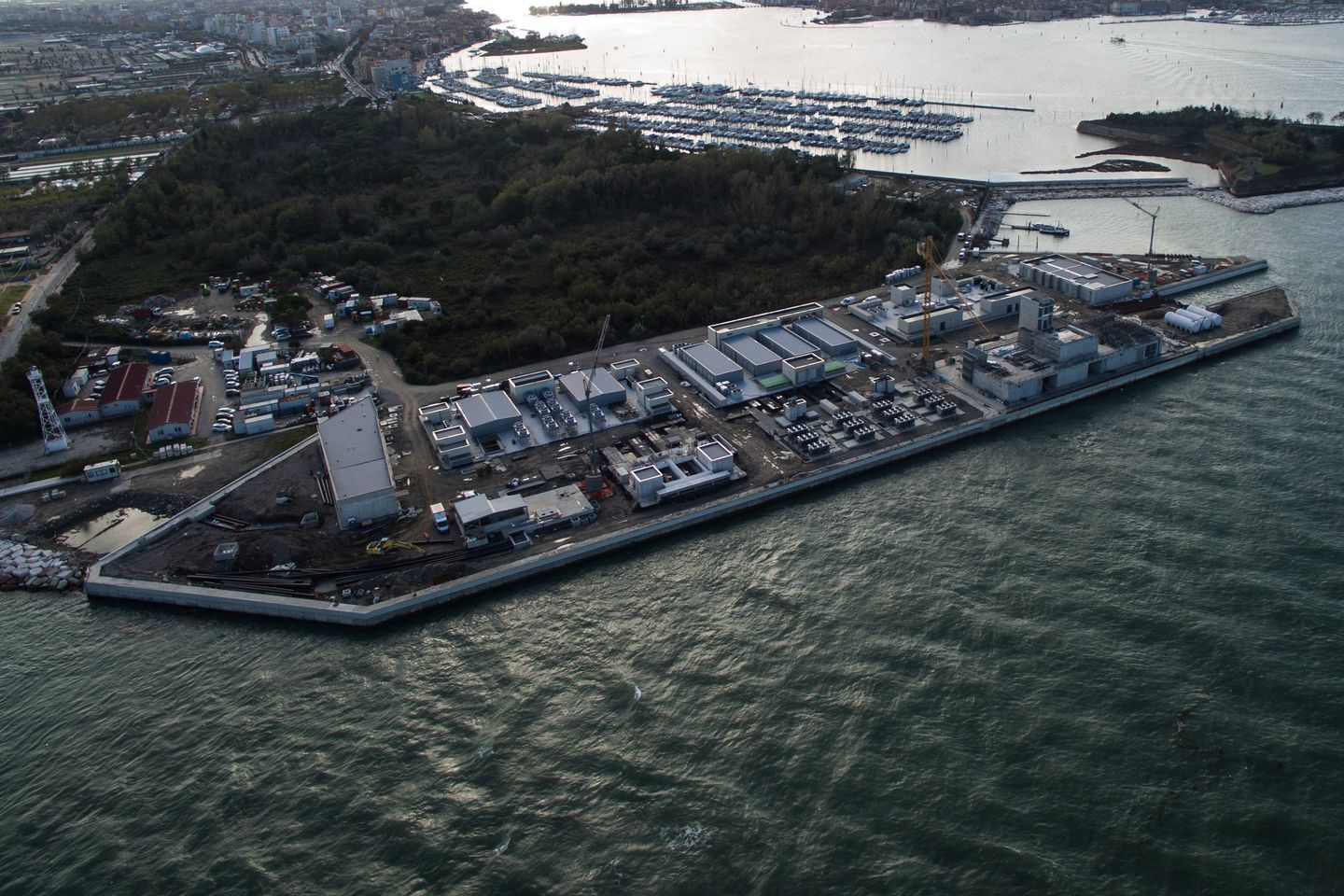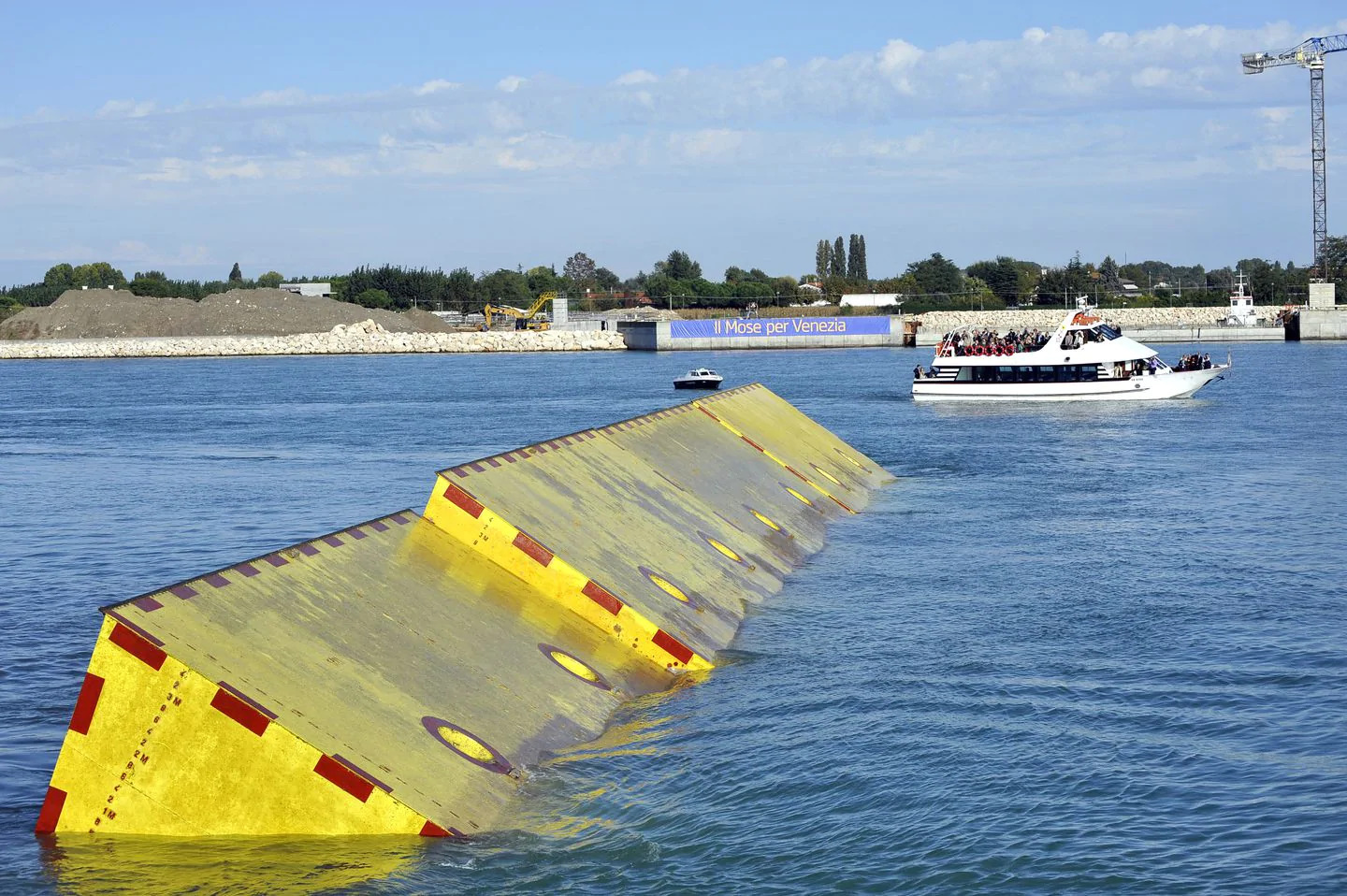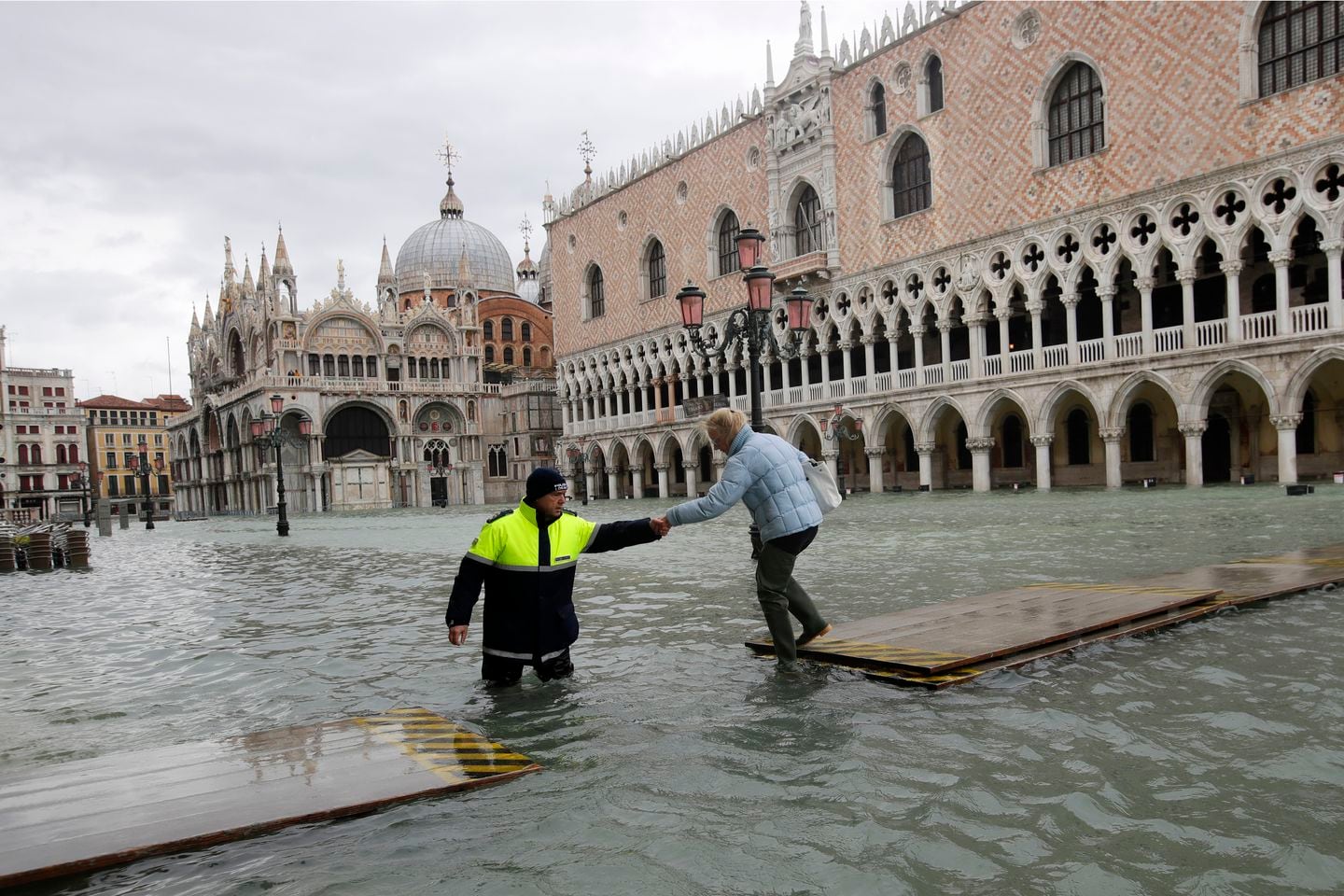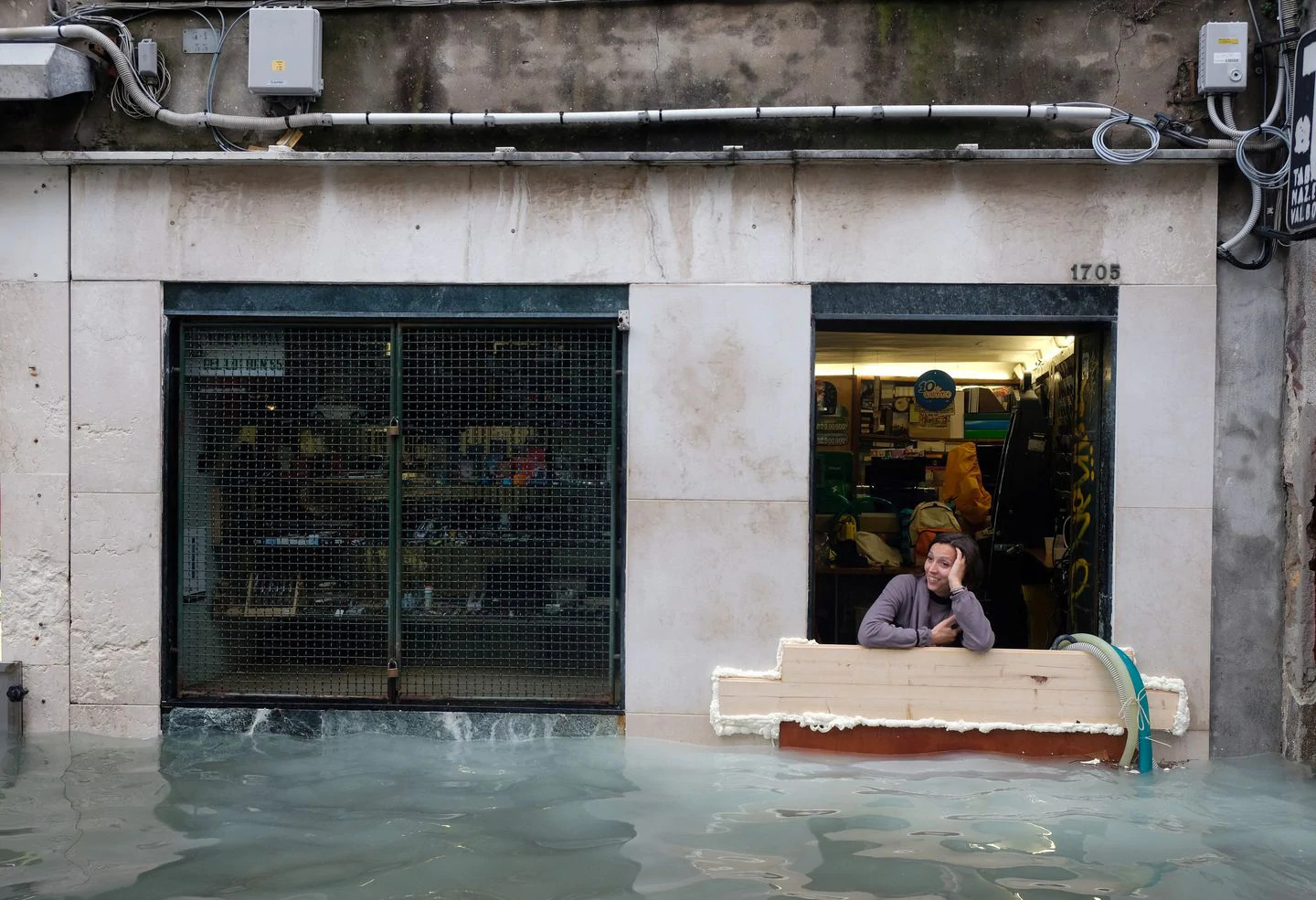ROME — It is among the most ambitious works of civil engineering in modern Italian history, an underwater fortress of steel designed to rise from the depths during high tides to protect the lagoon city of Venice.
But decades after being conceived, the project remains incomplete and unusable, little more than a refuge for the clams and barnacles that have made the machinery their home.
Venice, meantime, remains vulnerable, as demonstrated by the tides that inundated the city last week, flooding piazzas, churches and hotels, depositing layers of salt that eat away marble.
The city’s 6 billion euro flood barrier has been under construction since 2003 and was originally supposed to take eight years. Now, the best guess is that it will be ready by 2021 or 2022. Some experts say that, given the pace of sea-level rise, it may be obsolete just decades after it starts operating. Others wonder, given its sorry history, whether the system will ever be ready. Parts of the underwater project are already corroding.

“I am afraid it will never work, but I have to hope it will,” said Marco Gasparinetti, a Venetian civic activist. “The alternative is selling my home.”
There are multiple explanations for the periodic and sometimes catastrophic floods in Venice: the inherent fragility of a city built across 118 islands; the rising seas and erratic weather associated with climate change; the shifting tectonic plates believed to be causing the land to sink; the dredging conducted to make way for tankers and cruise ships.
[The many reasons Venice is flooding]
Many Venetians, though, also blame the deeply flawed effort to save their city.
Venice Mayor Luigi Brugnaro said that if the planned barrier had been in operation, the damage of the past week could have been avoided.
The project is known as MOSE — an Italian acronym for Experimental Electromechanical Module and a reference to the biblical Moses who parted the sea.
It consists of more than 70 massive, yellow underwater gates positioned across the three inlets that separate the Adriatic Sea and the Venetian lagoon. The gates are designed to rise during abnormally high tides, sealing off the lagoon.
That’s the theory, at least. The project has been set back by successive delays, cost overruns and political corruption.
Investigators determined in 2014 that project leaders were funneling taxpayer money away from MOSE and using it to bribe politicians. Thirty-five people were arrested, including then-Mayor Giorgio Orsoni and a former governor of the region, Giancarlo Galan.
“The delays are an all-Italian shame, and we urgently need a solution,” said Alessandro Morelli, the head of a parliamentary transportation committee.
Engineering experts have a bigger worry: that the project, even after it comes online, won’t function as the savior it was designed to be.

A prototype of MOSE was first tested in the 1980s, what amounts to the Jurassic age in the world of climate science, and the project was based on drastically outdated projections about how quickly the seas might rise, according to a UNESCO report. Specialists now speak about MOSE as a stopgap, something that can buy Venice a few decades while Italy comes up with a different plan.
“The solution of MOSE is obsolete and philosophically wrong, conceptually wrong,” said Luigi D’Alpaos, a professor emeritus of hydraulics at the University of Padova, who has written a book about Venice. “MOSE might work tranquilly and without issues for 10 to 20 years. But then problems will arise, and it will be necessary to take other actions.”
The intention behind the retractable gates was that, when they weren’t needed, they would allow Venice to retain its aesthetic feel, and allow for fishermen and other boats to make it in and out of port. More importantly, the Venice lagoon uses the Adriatic as a flushing valve, and its ecosystem would be jeopardized if sealed off from the high seas.
But based on projections of rising sea levels, in the not-too-distant future the floodgates would need to be raised so often that they would function like a near-permanent wall.

D’Alpaos said that with the sea level just 50 centimeters higher, MOSE would need to be used almost every day. In that scenario, the barrier could be used to keep Venice dry. But it would also create a far less desirable city, turning the lagoon around Venice into a stagnant pool for algae and waste.
The latest Intergovernmental Panel on Climate Change report said that sea levels by 2100 will rise between 60 cm and 110 cm, or 2 to 3 ½ feet, should gas emissions continue to increase.
The consortium that leads the MOSE project says the barrier is designed to handle sea level increases up to 60 cm.
The flooding in Venice is connected to tides, and in recent days, waters have been pouring into the city once and sometimes twice a day. The repeated flooding, and the projections that it will get worse, has caused some residents to despair about the city’s future. In the first two decades of the 20th century, Venice saw high tides of more than 110 cm five times. Two decades into the 21st century, Venice has seen similar tides more than 130 times.

Pierpaolo Campostrini, the director of a group that manages Venice lagoon research, said that even if MOSE works for “20 or 30” years, it will be worthwhile, given the damage Venice faces whenever it floods.
“We need to take into account that these kind of destructive events are not just material, but they affect the ability of the city to keep on existing, as opposed to being just a museum,” Campostrini said.
Campostrini said it would be easier to draft a long-term solution if Venice had some security that it wouldn’t get flooded so regularly. He mentioned a proposal by a University of Padova hydrologist that involves injecting seawater deep underground, encircling Venice, in an attempt to raise the terrain of the city. It was just one big idea under discussion, something that could be studied “when our feet are dry,” he said.
“Of course, to do this, you need serious research,” Campostrini said. “But its cost would be less than that of MOSE.”